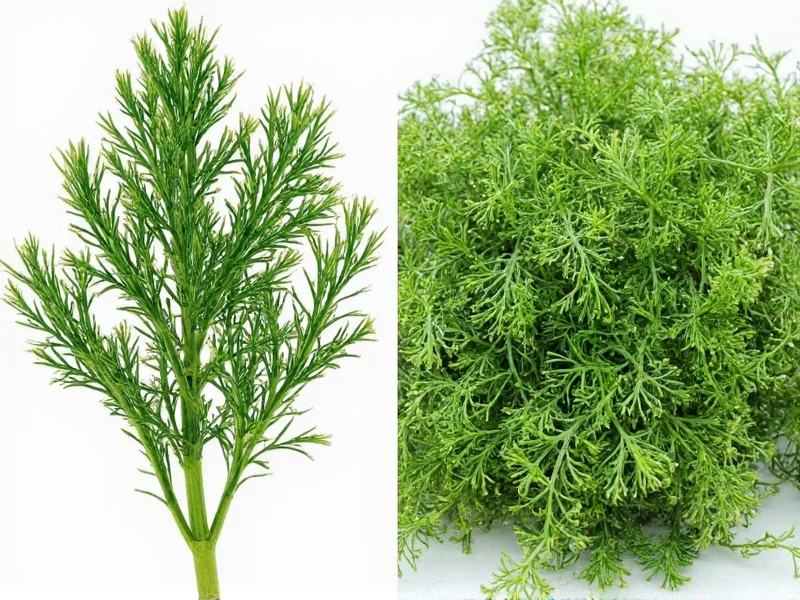Many home cooks encounter confusion when recipes call for “dill” or “dill weed” interchangeably. Understanding the difference between these terms is essential for achieving the right flavor profile in your dishes. Despite common misconceptions, dill weed isn’t a separate plant but rather the leafy portion of the dill herb we commonly use in cooking.
Understanding the Dill Plant
The dill plant (Anethum graveolens) belongs to the celery family and produces several usable components. When people refer to “dill,” they might be talking about different parts of the same plant:
- Dill weed – The delicate, fern-like leaves
- Dill seeds – The small, oval seeds that form after flowering
- Dill pollen – The aromatic pollen collected from dill flowers
Commercial confusion often arises because grocery stores sometimes label fresh dill branches as “dill weed” to distinguish them from dill seeds. This labeling practice has contributed to the misunderstanding that they’re different plants.
Visual and Flavor Differences
Recognizing the physical differences between dill components helps prevent recipe mistakes. The flavor profiles vary significantly, affecting how they perform in different dishes.
| Component | Appearance | Flavor Profile | Best Used In |
|---|---|---|---|
| Dill weed (fresh) | Feathery, delicate green leaves on thin stems | Fresh, grassy, slightly citrusy, mild anise notes | Fish dishes, salads, dips, sauces, pickling brine |
| Dill weed (dried) | Crumbled green leaves | Muted flavor, less citrus, more earthy | Long-cooking dishes where fresh isn’t available |
| Dill seeds | Small, oval, brownish-yellow seeds | Stronger, earthier, caraway-like with citrus undertones | Pickling, breads, stews, spice blends |
When to Use Each Component
Understanding the difference between fresh dill and dill weed is crucial for recipe success. While dill weed specifically refers to the leaves, many recipes simply say “dill,” creating confusion about which part to use.
Fresh dill weed works best in dishes where you want a bright, fresh flavor that doesn’t overpower other ingredients. Add it near the end of cooking to preserve its delicate flavor. It’s perfect for:
- Tzatziki and other yogurt-based dips
- Fish dishes, especially salmon
- Cucumber salads
- Salmon gravlax
- Light sauces and dressings
Dill seeds have a more robust flavor that holds up well during extended cooking. They’re essential for traditional dill pickles (despite the name, dill weed also contributes to flavor). Use them in:
- Pickling recipes (especially for cucumbers and beets)
- Bread recipes, particularly rye and sourdough
- Stews and braises
- Spice rubs for meats
- Homemade mustards
Common Misconceptions Clarified
Several myths persist about the difference between dill and dill weed that lead to cooking errors:
Misconception: Dill weed and dill are different plants
Reality: They come from the same plant—dill weed is specifically the leafy part.
Misconception: Dried dill weed equals dill seed
Reality: Dried dill weed is just dehydrated leaves, not seeds. They have completely different flavor profiles.
Misconception: You can freely substitute dill seeds for dill weed in recipes
Reality: They’re not interchangeable 1:1 due to flavor intensity differences. When substituting dill seeds for dill weed, use about 1 teaspoon of seeds for every tablespoon of fresh weed.
Substitution Guidance
When you don’t have the specific dill component a recipe calls for, these substitutions work best:
- Fresh dill weed substitute: Fresh parsley or tarragon (use 1:1 ratio), with a pinch of fennel fronds for the anise note
- Dill seed substitute: Caraway seeds or celery seeds (use half the amount as dill seeds are stronger)
- Dried dill weed substitute: Dried tarragon (use 1:1 ratio), though flavor won’t be identical
Remember that dried dill weed has only about one-third the potency of fresh, so adjust quantities accordingly. When exploring the difference between fresh dill and dill weed in recipes, always consider whether the recipe would benefit more from the bright freshness of the leaves or the earthy depth of the seeds.
Storage Tips for Maximum Freshness
Proper storage extends the usability of both components:
- Fresh dill weed: Treat like flowers—trim stems and place in a glass with water, cover loosely with a plastic bag, and refrigerate. Use within 5-7 days.
- Dill seeds: Store in an airtight container away from light and heat. They maintain potency for 2-3 years.
- Dried dill weed: Keep in a sealed container in a cool, dark place. Best used within 6-12 months.
Freezing fresh dill weed preserves more flavor than drying—chop it fine, mix with a little water or oil, and freeze in ice cube trays for easy portioning.
Practical Application in Cooking
Understanding what is dill weed versus dill seeds transforms your cooking results. For example, in traditional Scandinavian gravlax, fresh dill weed is essential for its delicate flavor that complements raw fish without overpowering it. Meanwhile, dill seeds provide the characteristic flavor in classic Polish dill pickles.
When following recipes that simply say “dill,” consider the dish type:
- If it’s a fresh salad, dip, or fish dish—use dill weed (the leaves)
- If it’s a pickle recipe, bread, or long-simmered dish—use dill seeds
Professional chefs often use both components in layered flavor approaches—seeds in the brine and fresh weed as a garnish for pickles, creating complexity that single-component recipes miss.











 浙公网安备
33010002000092号
浙公网安备
33010002000092号 浙B2-20120091-4
浙B2-20120091-4